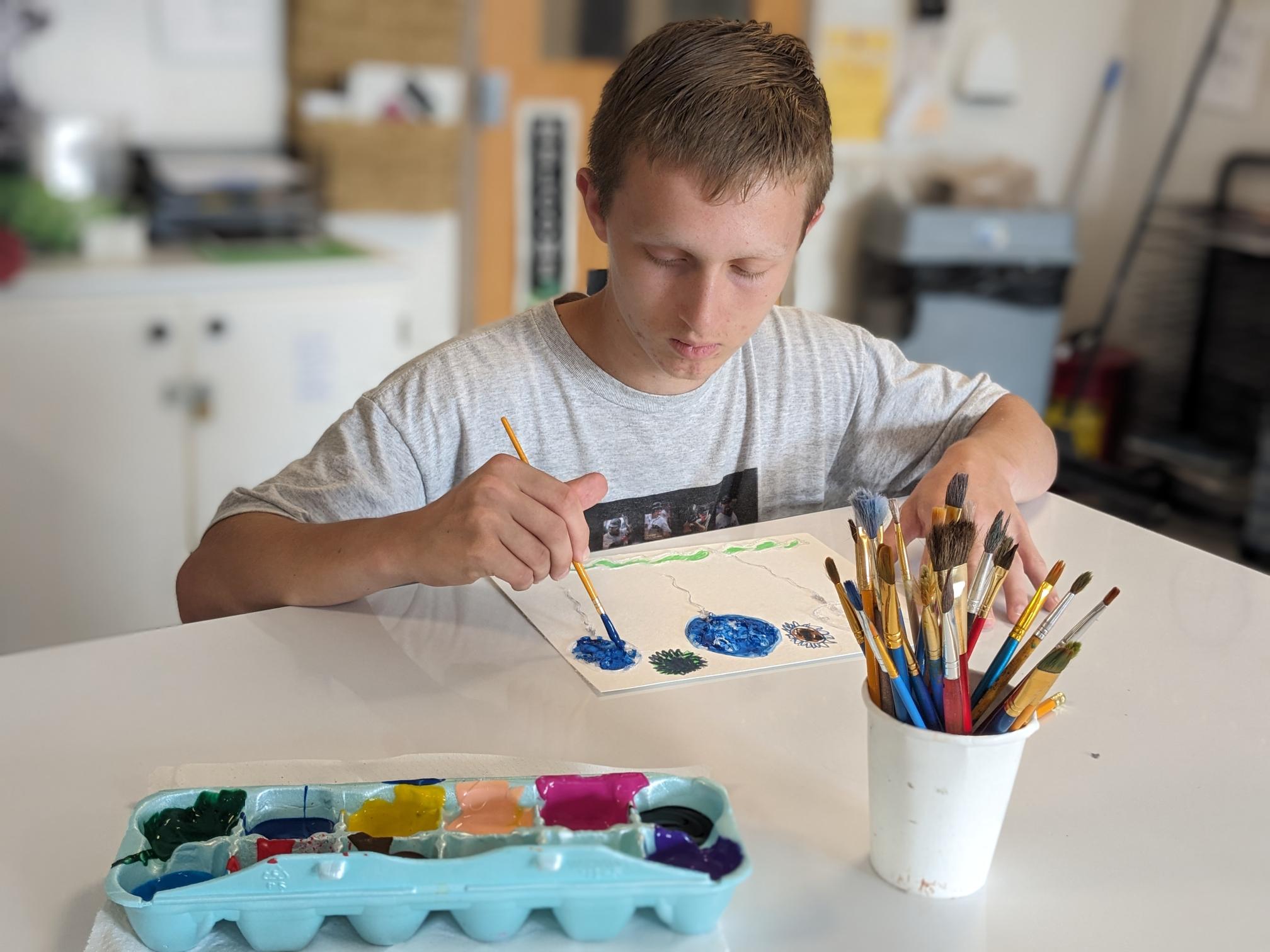Art therapy is a valuable therapeutic approach that can provide significant benefits for students with Autism Spectrum Disorder (ASD). This form of therapy utilizes the creative process of making art to improve and enhance physical, mental, and emotional well-being. For students with autism, art therapy can address various challenges: fostering development across multiple domains.
- Enhancement of Communication Skills
One of the primary benefits of art therapy for students with autism is the enhancement of communication skills. Many individuals with autism experience difficulties with verbal communication. Art provides an alternative means of expression, allowing students to convey their thoughts, feelings, and experiences without relying solely on words. Through drawing, painting, photography, and/or sculpting, they can communicate complex emotions and ideas, which might be challenging to express verbally. This non-verbal mode of communication can be particularly empowering, and can help build confidence in their ability to express themselves.
- Improvement of Social Skills
Art therapy often involves collaborative projects and group activities, which can significantly improve social skills. Working alongside peers on joint art projects requires students to engage in social interactions, share materials, and discuss ideas. These activities promote essential social skills; such as, turn-taking, listening, and cooperation. Additionally, the shared creative experience can help students with autism build connections and develop friendships, fostering a sense of community and belonging.
- Development of Fine Motor Skills
Creating art can help students with autism develop fine motor skills and hand-eye coordination. Activities like drawing, painting, cutting, and molding clay require precise movements and control. Regular practice of these activities can strengthen the muscles in the hands and improve dexterity. Enhanced fine motor skills are beneficial not only for artistic endeavors, but also for everyday tasks such as writing, dressing, and eating.
- Emotional Regulation and Stress Reduction
Art therapy provides a safe and structured outlet for expressing emotions, which can be particularly beneficial for students with autism who may struggle with emotional regulation. The process of creating art can be calming and meditative, helping to reduce anxiety and stress. Art therapists can guide students to explore their feelings through art, which can lead to greater self-awareness and understanding. This emotional exploration can help students develop strategies for managing their emotions in a healthy way, through a safe outlet.
- Sensory Integration
Many students with autism have sensory processing issues, finding certain sensory inputs overwhelming or distressing. Art therapy can help with sensory integration by providing controlled and manageable sensory experiences. Engaging with different textures, colors, and materials in art-making can help students become more comfortable with sensory input. Over time, this can improve their ability to process and respond to sensory information more effectively.
- Boosting Self-Esteem and Confidence
Creating art provides a sense of accomplishment and pride, which can significantly boost self-esteem and confidence in students with autism. Completing an art project and receiving positive feedback can reinforce a sense of capability and self-worth. This increased confidence can translate into other areas of life, encouraging students to take on new challenges, and engage more fully in their educational and social environments.
- Encouraging Creativity and Imagination
Art therapy encourages creativity and imagination, allowing students with autism to explore and experiment in a safe environment. This creative exploration can lead to the discovery of new interests and talents. It can also stimulate cognitive and intellectual growth by encouraging problem-solving, planning, and critical thinking skills.
Shrub Oak International School not only offers art classes throughout the school day, but also recreational art clubs after school and on the weekends. In addition, we offer sensory art play: art designated for sensory fulfillment, in addition to art for creativity. We have a kiln in our school, allowing students to create and “throw” their own pottery pieces, allowing for artistic and sensory input in molding the clay, painting, and glazing the pieces. Students work independently and collaboratively on art projects: we have several large mural pieces to which many of the students contribute. Our students’ beautiful artwork is displayed prominently throughout our school and grounds. Our students also create and sell their own art and crafts at our Little Oak Farm Stand, showcasing their talents and entrepreneurial skills.
By enhancing communication and social skills, improving fine motor skills, aiding emotional regulation, facilitating sensory integration, boosting self-esteem, and encouraging creativity, art therapy can significantly contribute to the overall development and well-being of students with autism. As such, it remains an invaluable component of therapeutic and educational programs designed to support these students.





